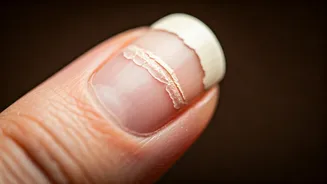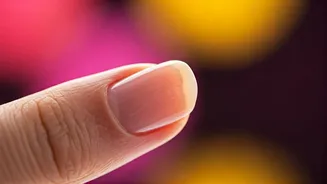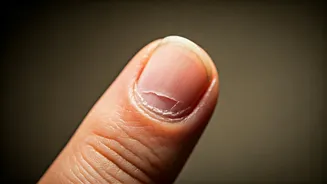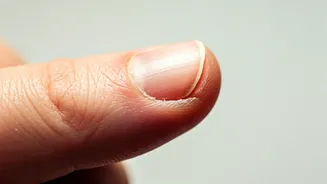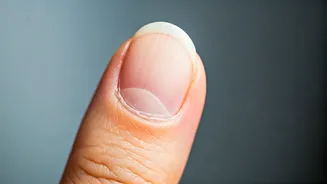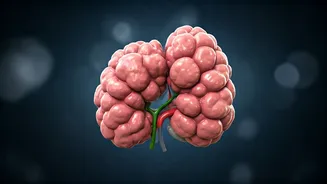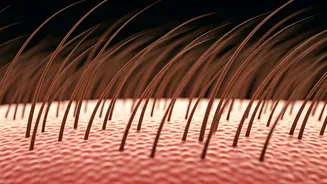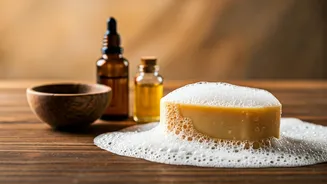Nail Peeling: The Basics
Peeling nails, also known as onychoschizia, can be a frustrating cosmetic issue, but it can also signal underlying health concerns. This condition occurs
when the nail plate separates into layers, leading to fragility and breakage. Nail peeling isn't just about aesthetics; it reflects the overall health of your nails. Several factors contribute to this condition. These range from external influences, like frequent exposure to water or harsh chemicals, to internal issues, such as nutrient deficiencies or underlying medical conditions. Understanding these causes is the first step toward finding the appropriate remedies and preventing future occurrences.
Common Contributing Factors
Several daily habits and external factors can significantly impact nail health, leading to peeling. Frequent handwashing, especially with harsh soaps, can strip nails of their natural oils, making them dry and brittle. Exposure to chemicals, such as those found in cleaning products, nail polish removers, and nail treatments, can also weaken the nail structure. Mechanical trauma, like biting nails, picking at them, or excessive use of hands, can cause physical damage, leading to peeling. Environmental factors, like dry air, can dehydrate the nails, making them more prone to splitting. In addition to these external factors, the use of gel or acrylic nails can also contribute, particularly if the application or removal process is not done carefully.
Medical Conditions Involved
While lifestyle factors play a role, peeling nails can also be a symptom of underlying health conditions. Nutritional deficiencies, especially a lack of iron, zinc, or biotin, can weaken nails. Certain medical conditions, like thyroid disorders (both hyperthyroidism and hypothyroidism), can cause changes in nail texture. Psoriasis, a chronic autoimmune condition, often affects the nails, leading to pitting, thickening, and peeling. Fungal infections, common in warm and moist environments, can also cause the nail plate to separate and peel. In some cases, nail peeling can be associated with other skin conditions, such as eczema or lichen planus, which can also affect the nails, leading to changes in their appearance and structure. If nail peeling is accompanied by other symptoms, it's essential to seek medical advice.
Effective Remedies and Care
Addressing nail peeling involves a combination of preventative measures and targeted treatments. Moisturizing nails regularly is crucial. Use a hand cream or cuticle oil to keep nails hydrated and flexible. Avoid harsh chemicals and protect your nails when doing housework, gardening, or other activities that involve potential damage or exposure to irritants. Consider using a nail hardener to reinforce the nail structure and prevent splitting. If a fungal infection is suspected, consult a doctor for antifungal treatments, which may include topical creams or oral medications. Nutritional supplements, like biotin, can help strengthen nails, but it's important to consult with a healthcare professional before starting any supplements. Filing nails in one direction, rather than sawing back and forth, helps prevent splitting. Be gentle with your nails and avoid using nails as tools.
Preventative Strategies to Adopt
Preventing nail peeling involves adopting a consistent care routine. Wear gloves when washing dishes or handling cleaning products. Use a gentle, acetone-free nail polish remover. Keep nails trimmed and filed to minimize the risk of breakage. Maintain a balanced diet rich in vitamins and minerals, which support nail health. Drink plenty of water to stay hydrated, as dehydration can contribute to dry and brittle nails. Avoid biting or picking at your nails, as this damages the nail plate and increases the likelihood of peeling. Give your nails breaks from nail polish and other treatments to allow them to recover and rehydrate. If you frequently get manicures, opt for gentle and professional services.
When to Seek Professional Help
While many cases of nail peeling are easily managed, there are times when seeking professional medical advice is essential. If nail peeling is severe, persistent, or accompanied by other symptoms, such as pain, swelling, discoloration, or changes in nail shape, consult a doctor or dermatologist. If you suspect a fungal infection, seek medical evaluation and treatment. If nail peeling is linked to other health concerns, medical professionals can help determine the underlying cause and provide an appropriate treatment plan. In situations where home remedies don't improve the condition within a few weeks, medical intervention may be necessary. For those with underlying medical conditions, such as diabetes or thyroid disorders, professional guidance is crucial for proper nail care and management.
